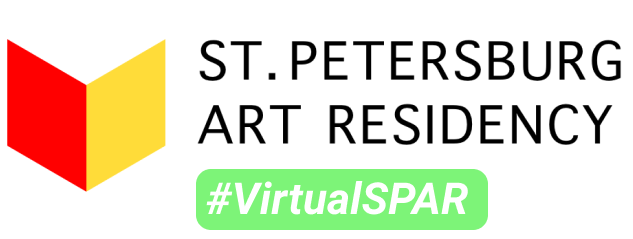Nonconformism without Shores by Yevgeniy Fiks
Historically, when Soviet nonconformist art is being discussed, people mean art produced outside of the official Soviet art system, outside the state-sponsored art institutions. This art was difficult if not impossible to exhibit inside the Soviet Union or to get it commissioned by Soviet art institutions. At the same time, the Soviet nonconformist art has since at least the 1960s enjoyed a spotlight in Western media, and with less success interest among Western exhibiting or collecting art institutions. Conventional wisdom: Soviet nonconformist art is an art of liberal individualism as opposed to totalitarian collectivism. In the context of the Cold War, the Western media presented the Soviet nonconformist art as an anti-totalitarian, dissident art repressed by the Soviet state and in so doing instrumentalised it for Cold War propaganda.
This approach of viewing art coming from the post-Soviet spaces in terms of “freedom vs repression” has been a sustained narrative for discussing later developments in post-Soviet art as well. Artists from post-Soviet spaces even now are being evaluated in terms of the level of repression they are subjected to by their respective post-Soviet governments, which determines their “value” or “usefulness” for mainstream media coverage as illustrations of rabid illiberalism of post-Soviet governments and societies. It’s a little more nuanced in the case of specialized art world media outlets, but the instrumentalisation of art from post-Soviet spaces continues.
However, not every artist described or self-described as a nonconformist is okay with being propaganda fodder. Also, there are a lot of gray areas. Besides, grouping so many very different Soviet artists that didn’t fit neatly into real or imaginary ideas of what “official Soviet art” was supposed to be under the rubric of “nonconformists” is equally problematic. From my friends at the Museum of Nonconformist Art in St. Petersburg, for example, I heard that many if not most Leningrad/Saint Petersburg free-thinking artists didn’t see their art as political or dissident or even wanted to apply the term nonconformist to their practice. They were interested in experiments and resisted to a broad range of pressures, not only those coming from the official Soviet art system.
The common wisdom of the post-War Western art historiography: individualism and freedom of expression have been viewed as characteristics of the Western art world while the Soviet art world was characterized by anti-individualism and control. According of this Cold War-era model of diametric oppositions, Soviet nonconformist art must have been aligned with Western art values of individualism and freedom of expression. However, even if this formula was self evident to the Cold Worriers, it’s not necessary how Soviet artists saw themselves.
The 20th century history teaches us that the issue of artistic nonconformism is contextual and depends on political, economic, and geopolitical conditions under which a particular art phenomenon was being produced. In the catalog for his 1982 exhibition “Realism and Realities: The Other Side of American Painting 1940-1960” at the Zimmerli Art Museum in New Brunswick, New Jersey, curator Jeffrey Wechsler writes about the realist art produced in the US during the two decades associated with the triumph of American Abstract painting. The powerful art critics of that era ignored or were openly hostile to American realist artists of that time, which in turn led to the neglect on the part of the commercial gallery system and museums. The American realism of that time was the “other” American art, not unlike Soviet nonconformist art of the 1960-1970s. Wechsler writes about those American realist artists of the 1940-50s as “unclassifiable artists, for the most part. Most have been omitted from history because the fit no category neatly. It is not an exhibition of REALISM, as such, but rather of artists who used recognizable imagery, during a period when this was immensely unfashionable.”

However, for my contribution to the Nonconform project, I wanted to shift focus from the Cold War-era “politics and aesthetics” to that of “politics and gender”, that is the history of non-conforming gender and sexuality in the US and Soviet Union of the Cold War era.
My project for Nonconform is called Washington-Moscow (Security Risk Diptychs) and it explores the mirroring cases of state homophobia across the ideological divide: in the Soviet Union in the 1930s and the United States in the 1950s. The project posits the mid-20th century homosexual as the shared “Other” of the Communism-Capitalism dichotomy.
The histories of the Red and Lavender scare in the US overlapped during the McCarthy era in the late 1940s-1950s. The anti-Communist, anti-Soviet, and anti-gay sentiments were fused in the Cold War witch-hunt rhetoric in the US. At the time, the federal government purged homosexuals that it employed, calling them “security risks”— predisposed to betrayal and vulnerable to being blackmailed by Soviet agents into working for them. A link between political and sexual “deviancy” and state treason was established in the media and state echelons of Cold War America.
Earlier in 1933-34, in the Soviet Union, homosexuality was presented by the State security apparatus as a political and security issue, and it was officially criminalized and stigmatized as ideologically anti-Soviet “capitalist degeneracy.” This position was justified by the need to crush foreign spies recruiting among Soviet homosexuals in the government and the army. The Soviet sodomy laws were used as a political tool against political dissidents and to solidify Soviet opposition to Nazi Germany in the early 1930s. The Soviet state conflated homosexual relations with espionage activities and a betrayal of one’s homeland.
Washington-Moscow (Security Risk Diptychs) is a series of photo diptychs, for which I photographed popular gay cruising sites in Moscow and Washington circa 1930s-1950s. Views of Moscow and those of Washington are pared based on formal visual similarity. I see this project as broadening the notion of Cold War-era nonconformism, with its binary oppositions, propaganda, instrumentalizations, and self-righteousness.
You Might Also Like:
Van Luong (1)
 Kjell Zillen (4)
Kjell Zillen (4) Mels Dees (9)
Mels Dees (9) Gao Yu (4)
Gao Yu (4)Katya Lebedev (1)
Juan Dies (1)
 Anastasia Prahova (2)
Anastasia Prahova (2)Nena Nastasiya (7)
Taarn Scott (6)
 Cynthia Fusillo (20)
Cynthia Fusillo (20)Roberta Orlando (8)
 Nanda Raemansky (25)
Nanda Raemansky (25) Eliane Velozo (22)
Eliane Velozo (22)Leyya Mona Tawil (1)
Julia Dubovyk (2)
Jianglong (2)
 Iara Abreu (23)
Iara Abreu (23) Agathe Simon (1)
Agathe Simon (1)Rosetta Allan (1)
Elizaveta Ostapenko (5)
 Valentin Boiangiu (2)
Valentin Boiangiu (2) Wesley John Fourie (9)
Wesley John Fourie (9) Renato Roque (3)
Renato Roque (3)Rosa Gauditano (5)
Neerajj Mittra (34)
Ciana Fitzgerald (5)
Boris Moz (3)
 Katerina Muravuova (5)
Katerina Muravuova (5)Kyla Bernberg (1)
 Muyuan He (1)
Muyuan He (1)Liza Odinokikh (2)
 Amalia Gil-Merino (2)
Amalia Gil-Merino (2)Paulo Carvalho Ferreira (6)
 Anastasiia Komissarova (2)
Anastasiia Komissarova (2) Yumiko Ono (1)
Yumiko Ono (1) Stefania Smolkina (1)
Stefania Smolkina (1)Lena Adasheva (1)
 Zahar Al-Dabbagh (1)
Zahar Al-Dabbagh (1) Emily Orzech (6)
Emily Orzech (6) Fernanda Olivares (5)
Fernanda Olivares (5) Noor van der Brugge (3)
Noor van der Brugge (3) Ira Papadopoulou (2)
Ira Papadopoulou (2) Tom Chambers (8)
Tom Chambers (8) Titi Gutierrez (3)
Titi Gutierrez (3) Franz Wanner (2)
Franz Wanner (2) Crystal Marshall (6)
Crystal Marshall (6) Transpositions III (36)
Transpositions III (36) Riddhi Patel (3)
Riddhi Patel (3) Michele Kishita (2)
Michele Kishita (2)Damian Carlton (4)
 Deanna Sirlin (1)
Deanna Sirlin (1) Laura Salerno (3)
Laura Salerno (3) Nina Annabelle Märkl (12)
Nina Annabelle Märkl (12) Elina Fattakhova (1)
Elina Fattakhova (1) Tasha Hurley (1)
Tasha Hurley (1) Ian Hartley (2)
Ian Hartley (2) Laurence de Valmy (2)
Laurence de Valmy (2) Ilia Bouslakov (5)
Ilia Bouslakov (5) Andrea Ahuactzin Pintos (4)
Andrea Ahuactzin Pintos (4) Sveta Nosova (3)
Sveta Nosova (3)Carlos Carvalho (1)
 Maria Timofeeva (1)
Maria Timofeeva (1) Jinn Bug (2)
Jinn Bug (2) Johannes Gerard (3)
Johannes Gerard (3)Irène Mélix (1)
 Aba Lluch Dalena (3)
Aba Lluch Dalena (3) Fabian Reimann (1)
Fabian Reimann (1)Natalia Gourova (1)
 Kate Finkelstein (4)
Kate Finkelstein (4)Raina Greifer (1)
James McCann (2)
Naza del Rosal Ortiz (1)
 Jay Critchley Jay Critchley (1)
Jay Critchley Jay Critchley (1) Vicky Clarke (4)
Vicky Clarke (4) Maria Silva (4)
Maria Silva (4) Shir Cohen (5)
Shir Cohen (5) Peter Shenai (4)
Peter Shenai (4) Bo Choy (4)
Bo Choy (4)Alina Orlov (2)
 Olga Popova (3)
Olga Popova (3) Coco Spencer (2)
Coco Spencer (2) Filippo Fabbri (2)
Filippo Fabbri (2)Daniele Leonardo (5)
 SISTERS HOPE (1)
SISTERS HOPE (1) Scenocosme : Gregory Lasserre & Anais met den Ancxt (4)
Scenocosme : Gregory Lasserre & Anais met den Ancxt (4) Anne Fehres & Luke Conroy (6)
Anne Fehres & Luke Conroy (6) Olesya Ilenok (2)
Olesya Ilenok (2) Marie-Eve Levasseur (4)
Marie-Eve Levasseur (4) Natalia Tikhonova (2)
Natalia Tikhonova (2)Ildar Iakubov (1)
 Evgeniy Lukuta (7)
Evgeniy Lukuta (7) Jarkko Räsänen (5)
Jarkko Räsänen (5)Maria Guta (6)
Egle Kulbokaite Dorota Gaweda (6)
Thomas Kotik (1)
 Andrea Stanislav (3)
Andrea Stanislav (3)Ludmila Belova (1)
Alena Levina (1)
 Ilia Symphocat (2)
Ilia Symphocat (2)Yevgeniy Fiks (1)
Star Smart(Formerly Trauth) (18)
Jyoti Arvey (1)
Les Joynes (2)
 Ekaterina Ivanova (1)
Ekaterina Ivanova (1) Lev Shusharichev (1)
Lev Shusharichev (1)Michael Stebackov (5)
Ryan Griffith (3)
Lidia Gordeenko (3)
 Masha Danilovskaya (7)
Masha Danilovskaya (7) Irina Korotkaya (2)
Irina Korotkaya (2) WagtailFilms Oksana Bronevitskaia&Dmitry Zhukov (5)
WagtailFilms Oksana Bronevitskaia&Dmitry Zhukov (5)Kostya Diachkov (1)
Elena Sokolova (3)
Alexander Nikolsky (2)

